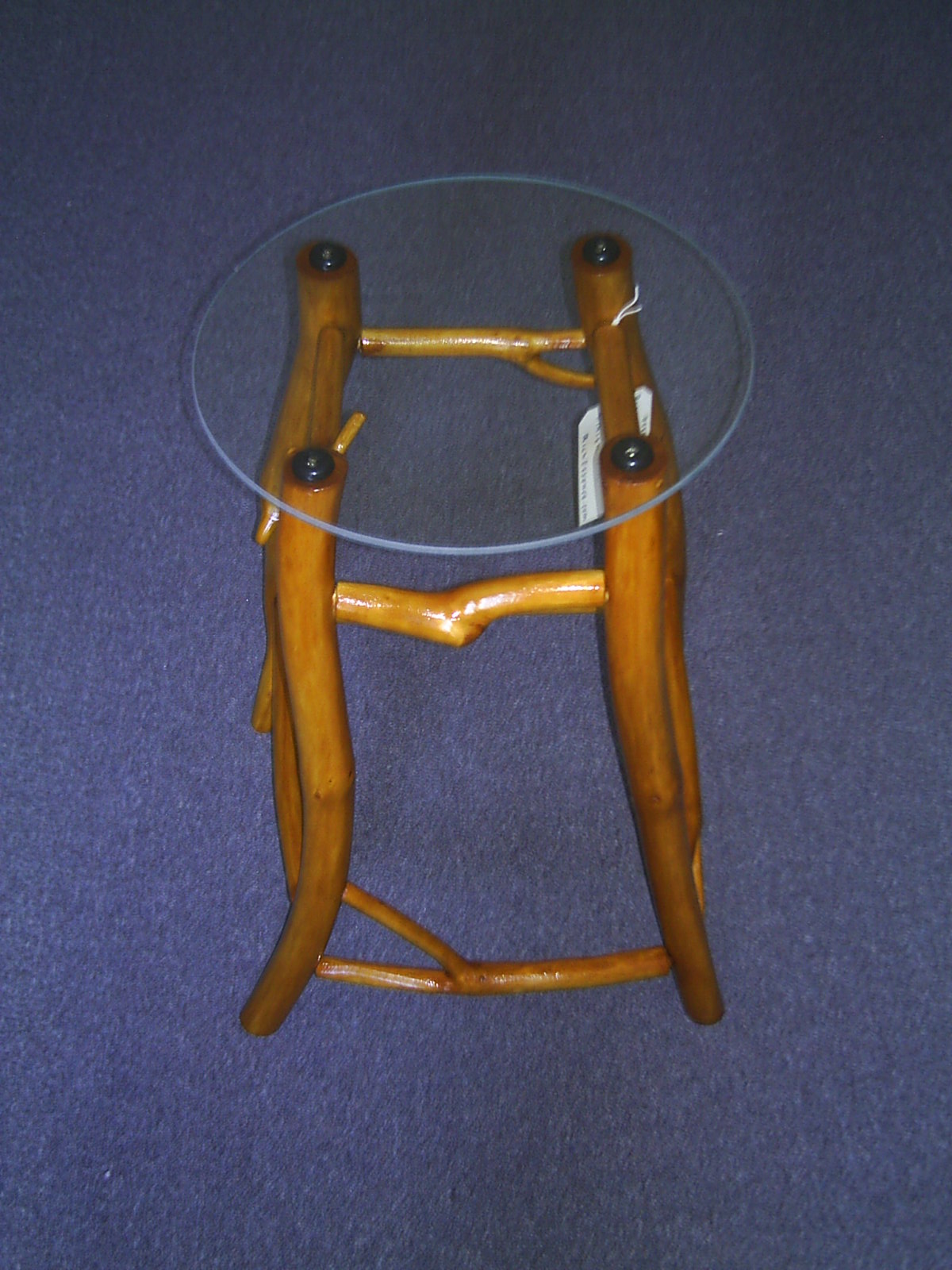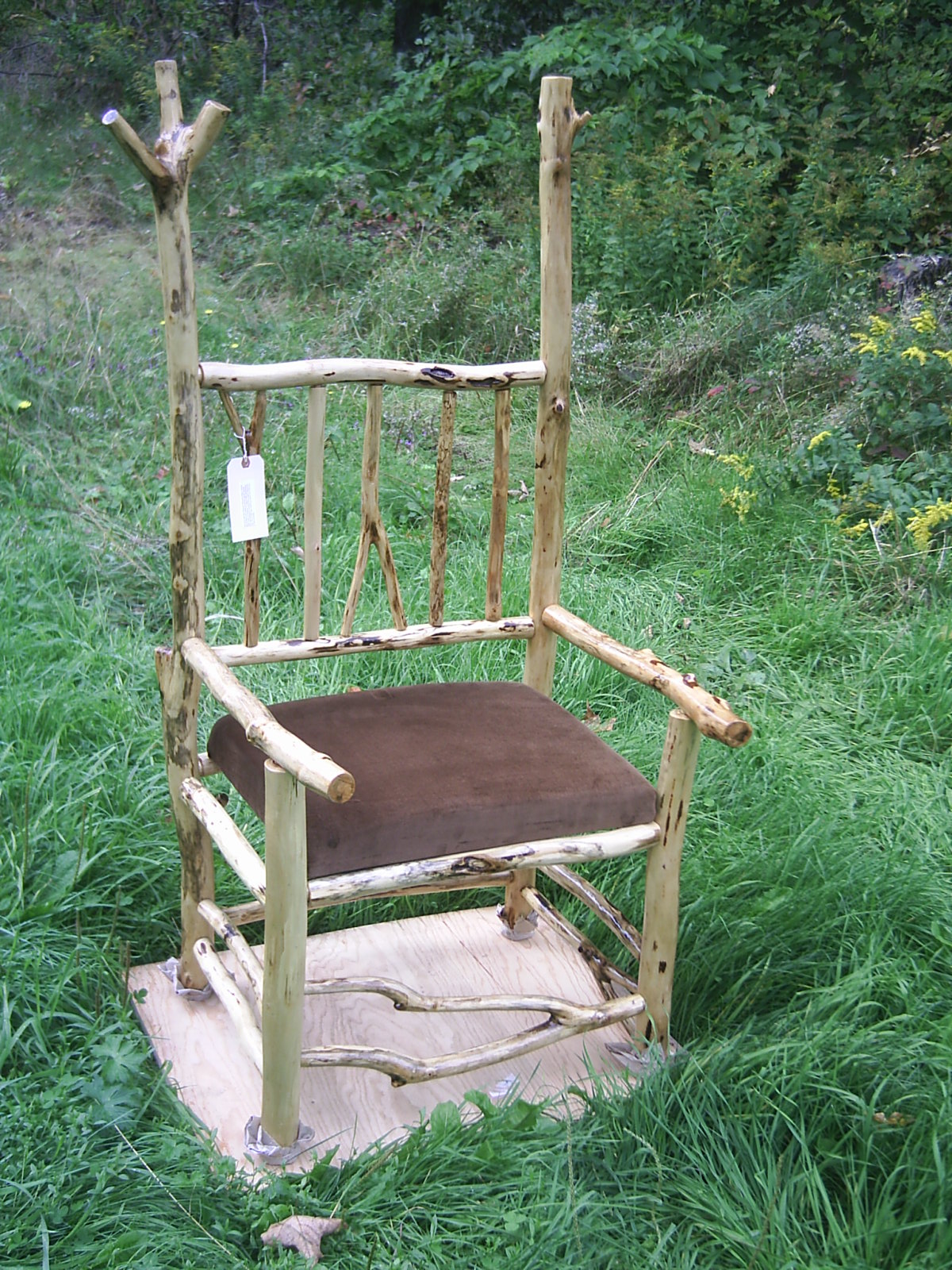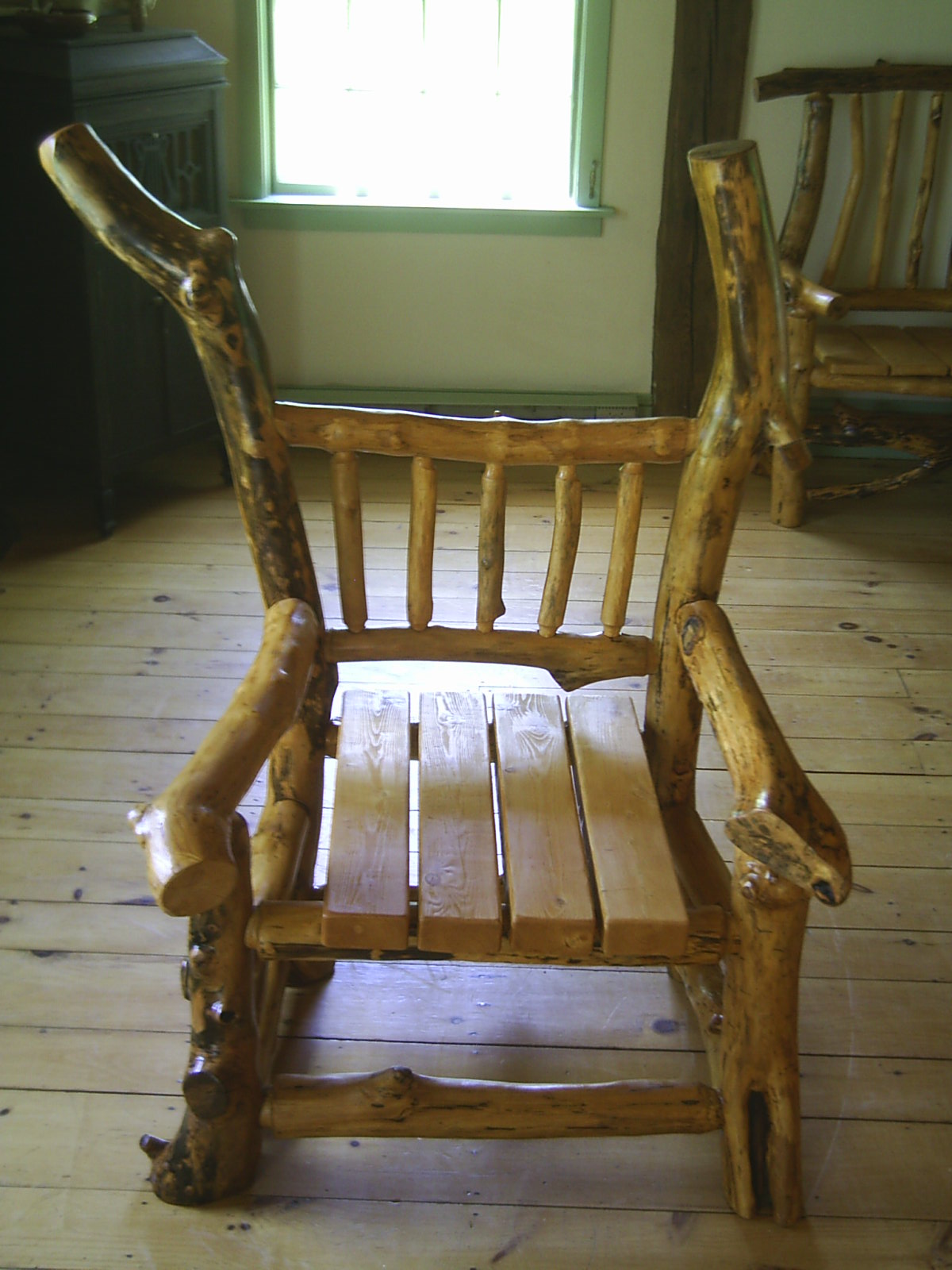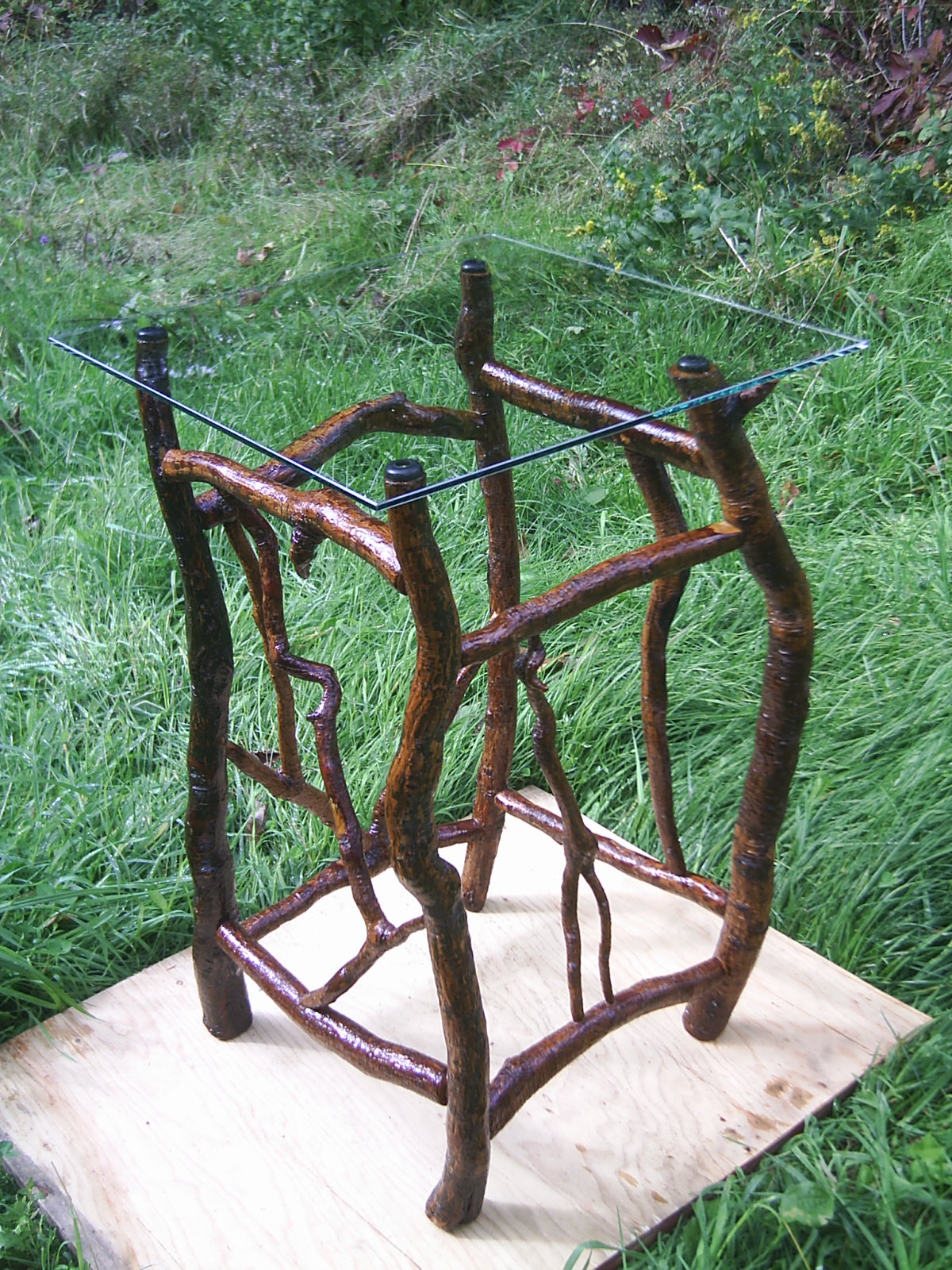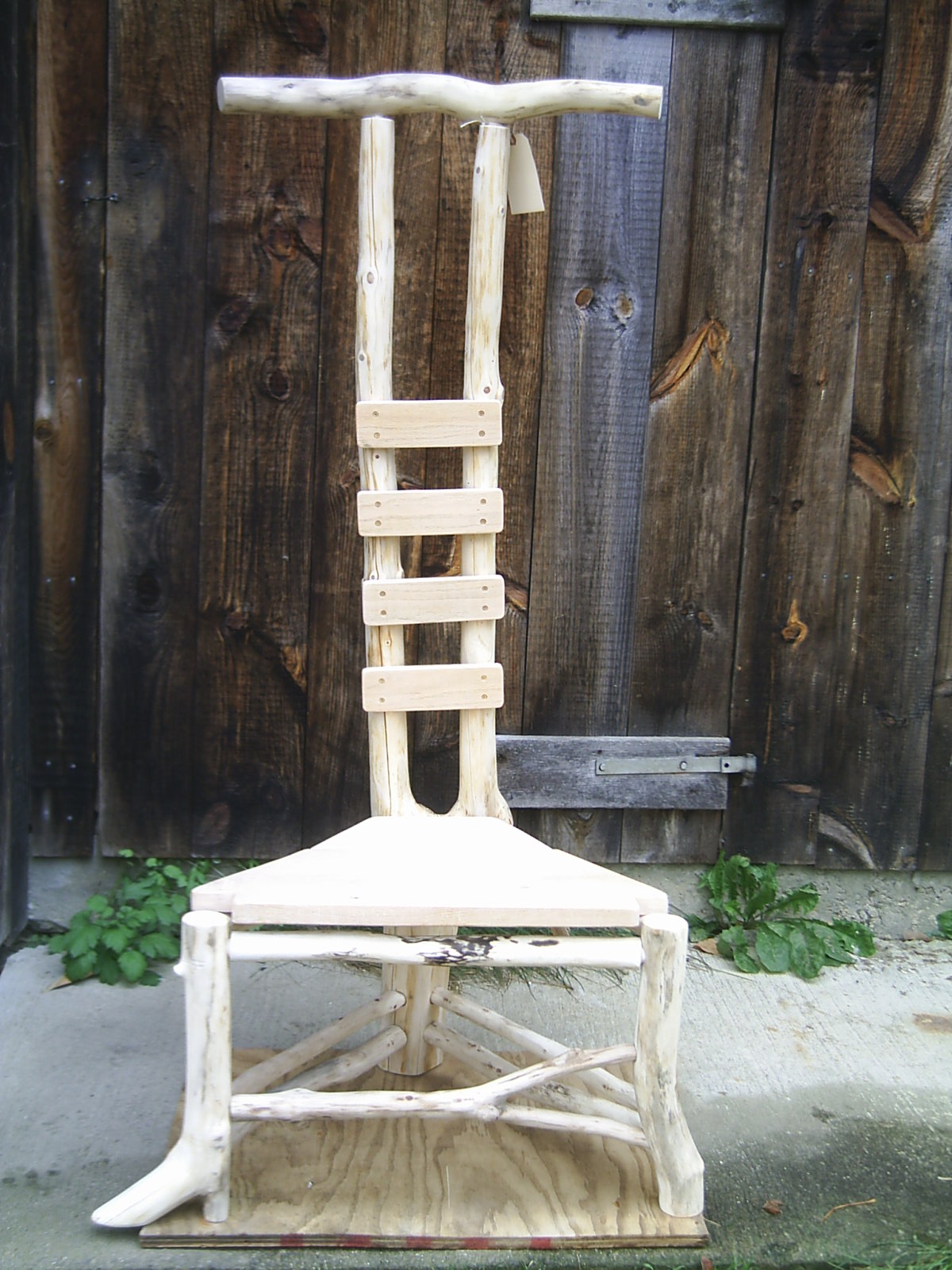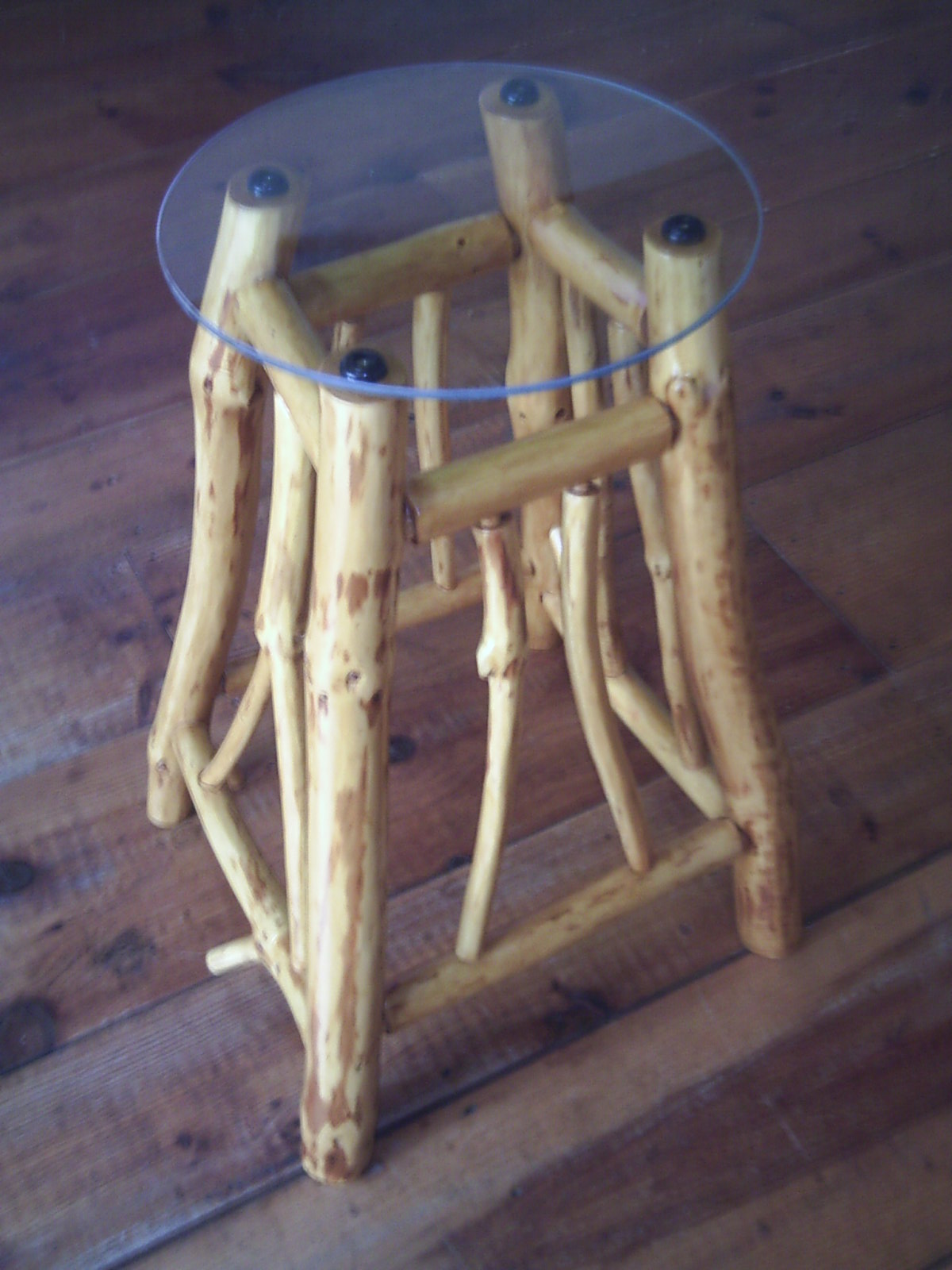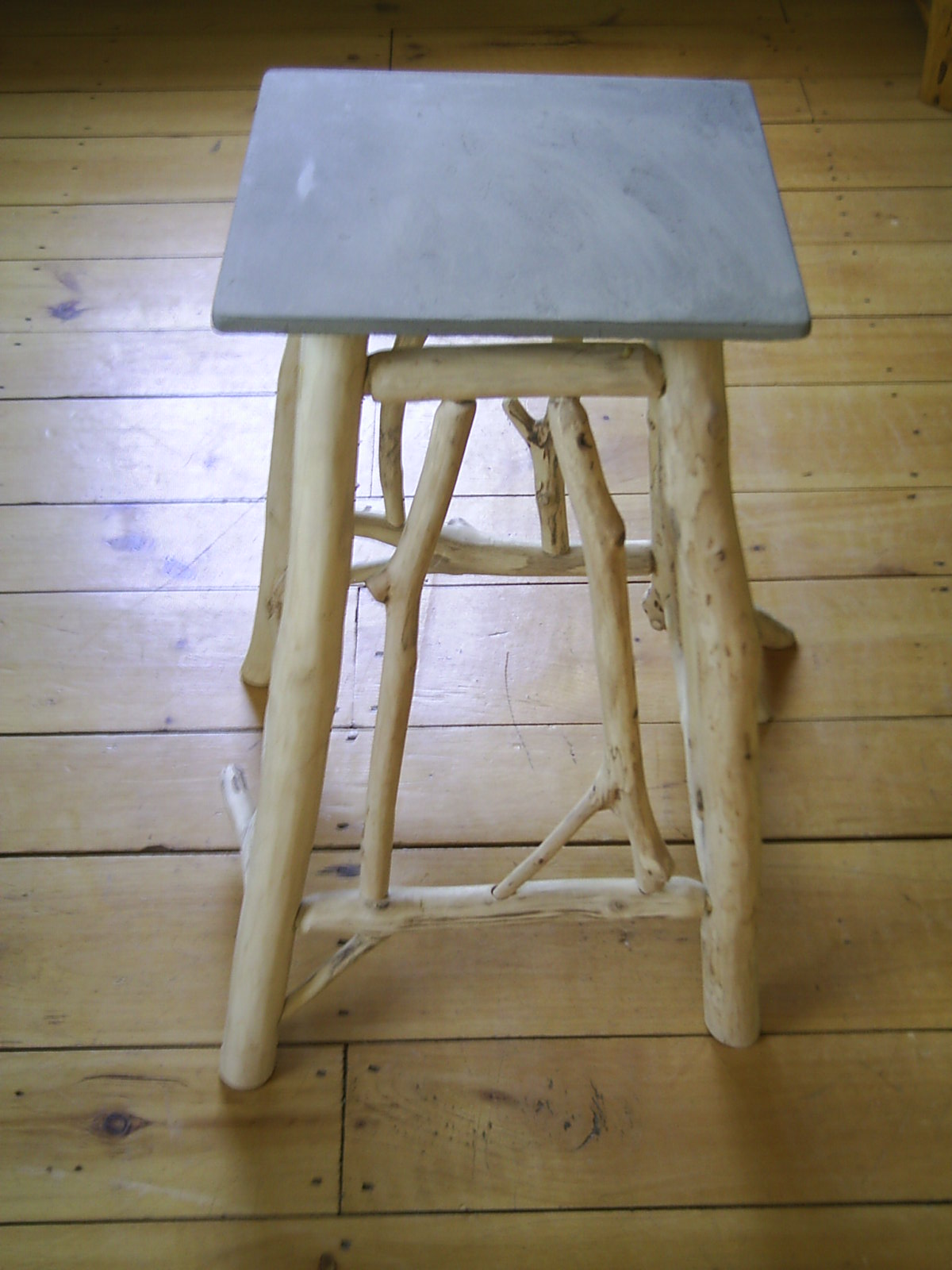Updates
- Previous Updates
April 05, 2024
I'm offering copyediting & proofreading services....more
Main Menu
Mark (at) RichEssence.com
Rustic Furniture
Introduction
I've been a self-taught rustic since 2007. I learned mostly by studying books. Before explaining my own style in more detail, here is some basic knowledge about rustic furniture.
Some furniture makers manipulate the wood very little, using only hand tools. Others use electric tools for cutting, shaping, & fastening. The joinery of some makers is mostly mechanical, while others use primarily mortise & tenon. Some rustics specialize in tables or chairs. There are those who work mostly with a specific type of wood. No one style is better than another. The ones who use only basic tools, such as saws, hammers & nails, may do so not because that's all that's available to them, but because that's their style. Some focus on artistic qualities for furniture that won't get much use, while others make durable pieces. Many combine these qualities.
There are a number of ways I've seen styles & designs explained. This is my interpretation. Two basic rustic furniture designs are the panel & slab. The basic styles include: bentwood, stick (twig), driftwood, freeform, log, slab, recycled wood, & root. Other factors that determine a design or style include: material, environment, dimension, & anatomy.
Some styles appear to overlap with design types. For instance the slab style may also be considered a design since it uses a different method of construction than panel. In this case, slabs rather than sticks are used.
The driftwood style uses various types of hardwood logs & sticks (dimensional factor), & even incorporates the panel & freeform design methods. However, the distinguishing feature of this style is the wood which has been given a weathered appearance as a result of being exposed to water (environmental condition) for a period of time.
Bentwood may use the exact same material as a stick style, but the distinguishing factor here is the dimensional feature. Although the actual material used is the same wood, because this style incorporates a smaller diameter, the design is influenced to accommodate this factor, resulting in the bentwood style.
An example of how an anatomical factor determines which style a piece of furniture belongs to, would be the root style. The key factor here is the part of the tree which is used. In this case, it is the root. So, the part (anatomy) of the tree is the distinguishing feature. A single tree, could in theory, be used for the log, stick, root, or even bentwood styles.
Then there is freeform or freestyle, which, according to my observation, can span both the style & design/structural realms. For instance, regarding the style realm, it may combine root (a style based on anatomy) with stick (standard branches up to a few inches in diameter), driftwood (a style based on environmental factors), & recycled style/materials. And incorporating the design realm, it may include some elements of the panel, plus the slab. Freeform, itself may even be seen by some as a design method with its own structural characteristics. Therefore, freeform can be thought of as both a structural design method or a style, as it includes both structural design methods as well as a variety of styles.
My Methods
The design I currently use for tables, chairs & benches is the panel. But I've also used a tripod design for tables. I use mostly mortise & tenon joints. When mechanical fastening is employed, brass nails & screws are used on all visible surfaces. When working with each part prior to assembly, the bark is stripped off, then it is sanded with an orbital sander. All large dents & undesirable features are removed. After that, each one is hand sanded.
For chairs & benches I have used mostly hardwoods like maple, baslar poplar, beech, ironwood, basswood, birch, & cherry. I've constructed tables out of pine & cedar with good results. The table tops have so far been stone, glass, or wood. Structural epoxy is used for chairs & benches. Small tables are secured with a high-strength wood glue such as TightBond III. I've used paste wax, shellac, & polyurethane varnish for topcoats, & boiled linseed oil for staining. My current favorite is shellac with a polyurethane topcoat.
Although I may move quickly at times, I prepare each part carefully, knowing that the quality of the overall product is a result of my attention to each individual part. I keep all joints as clean as possible. The products that I strive to produce are high-quality, visually pleasing, durable pieces that are suitable for everyday use.
Most of the wood that I now use is from fallen trees. When cutting the parts, I currently categorize them into posts, rungs, irregular, & combination (i.e., a part that can act as a post, arm, & rung). I usually discard wood that has significant traces of insects, unless it is exceptional. In this case, my current method to remove them is to treat the wood with turpentine. I've also wrapped them in a clear plastic sheets to let them bake in the sun for a few days as a type of solar sterilization. Other methods I've heard of that may be used in the future include subjecting them to smoke or submerging them in water for several days.
Before cutting a branch, I try to visualize what part & type of furniture it will be used for. It took a while to develop this feature. It also takes more time while cutting. It would be much easier & quicker to just cut all pieces into the few sizes I mentioned. And this would make for excellent furniture, structurally. However, using this visualization method while collecting is much more efficient & results in a better, more "rustic" piece of furniture. A single stick, for instance, can serve as a front post, arm rest, & a rung on a rear panel, if its sized-up correctly. I've noticed that people I consider to be the best rustic furniture makers produce these pieces.
Much of my rustic knowledge so far has been gained by studying the panel design process in books, & looking at pictures to get ideas. Although I've become proficient in the panel design type, my rustic education will be ongoing. If I've already decided on a basic design for a bench & have cut the pieces to size & set them aside, I'll often visualize myself performing each phase, from assembly to finishing. Sometimes I can detect problems I'll encounter & make the corrections before I begin the physical activity.
I have developed an appreciation for trees since I began making rustic furniture. And in branches on the ground or woodpiles I see potential furniture.
My Work
These pieces were given away & sold.
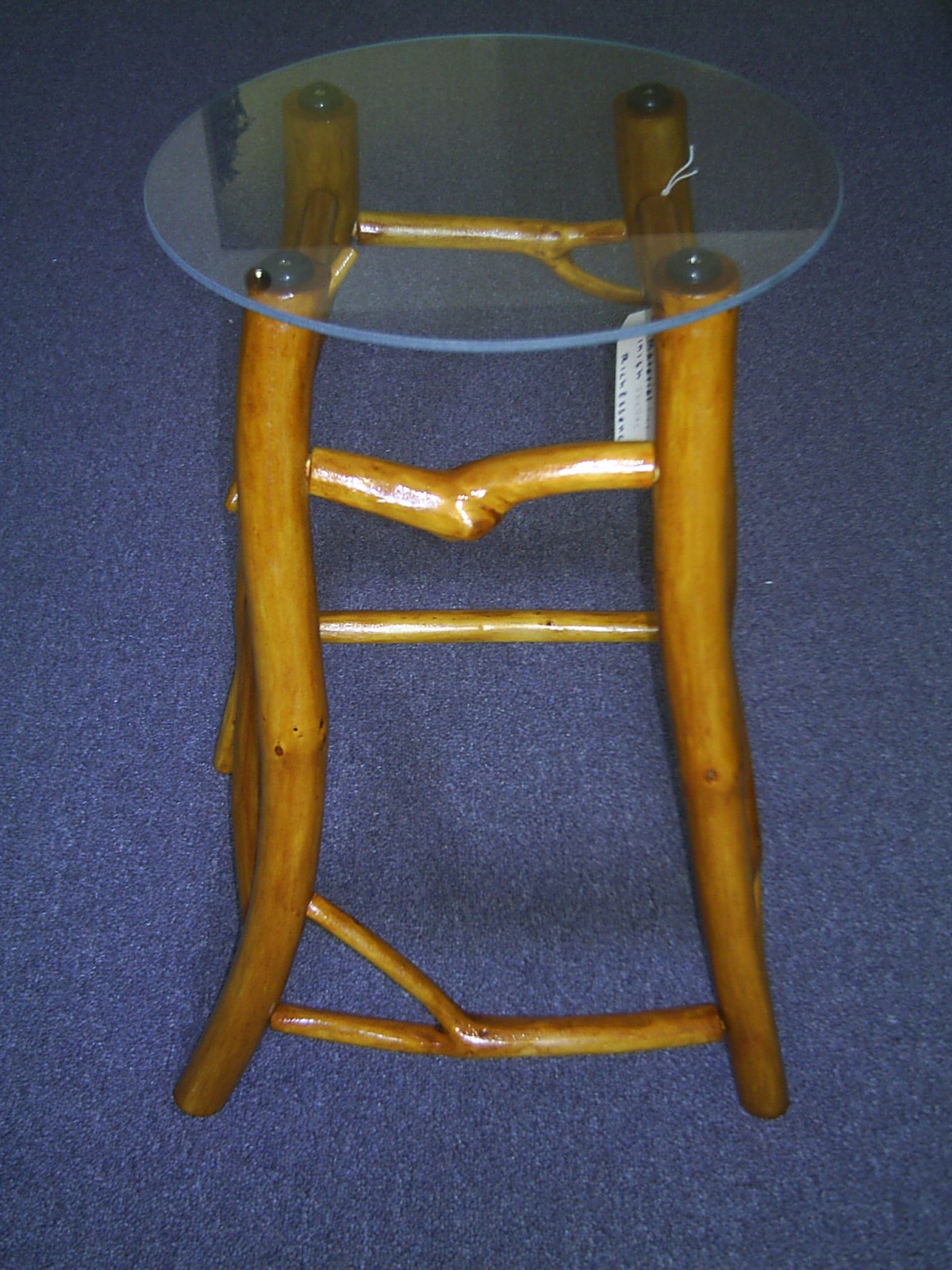
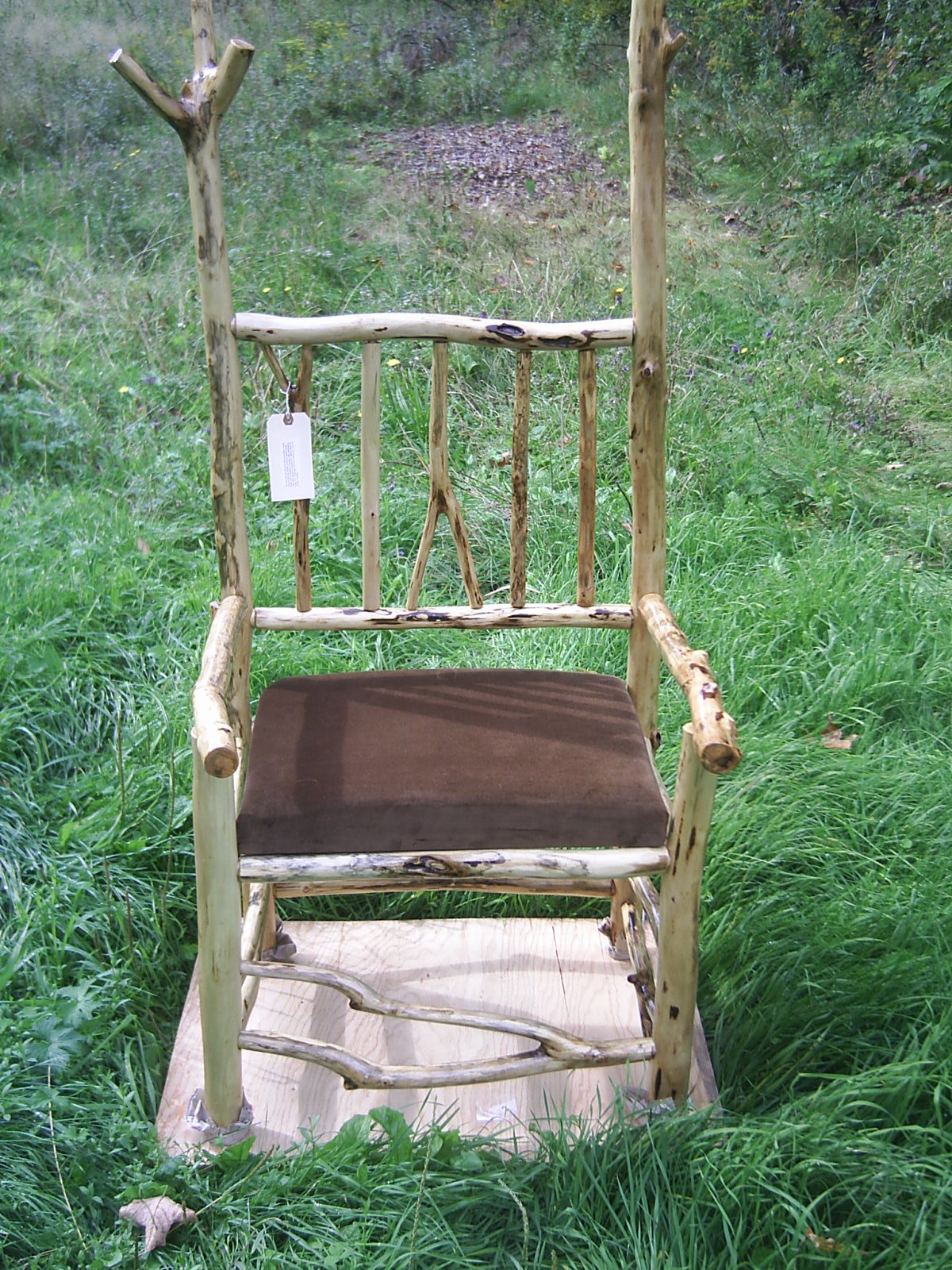
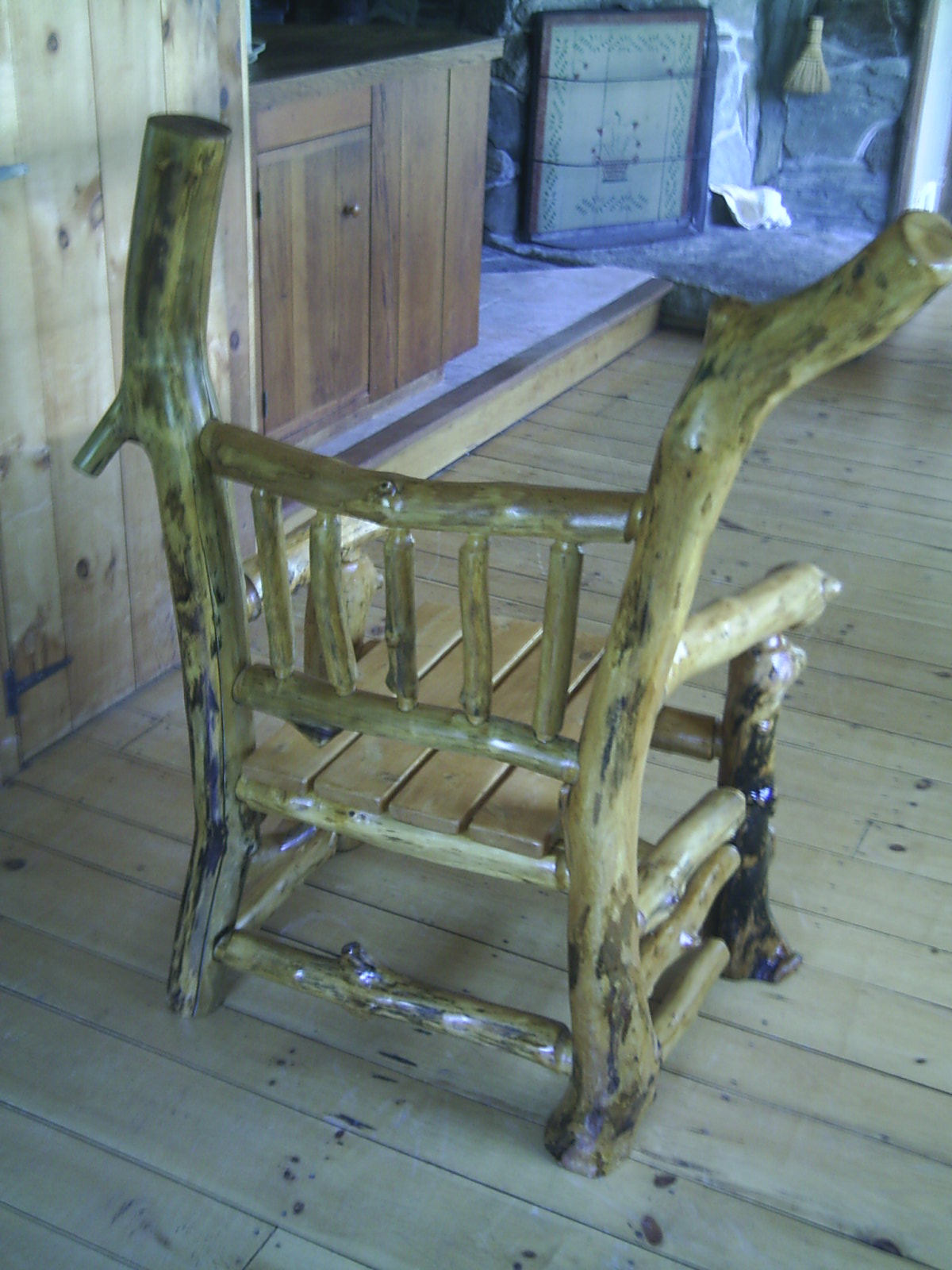
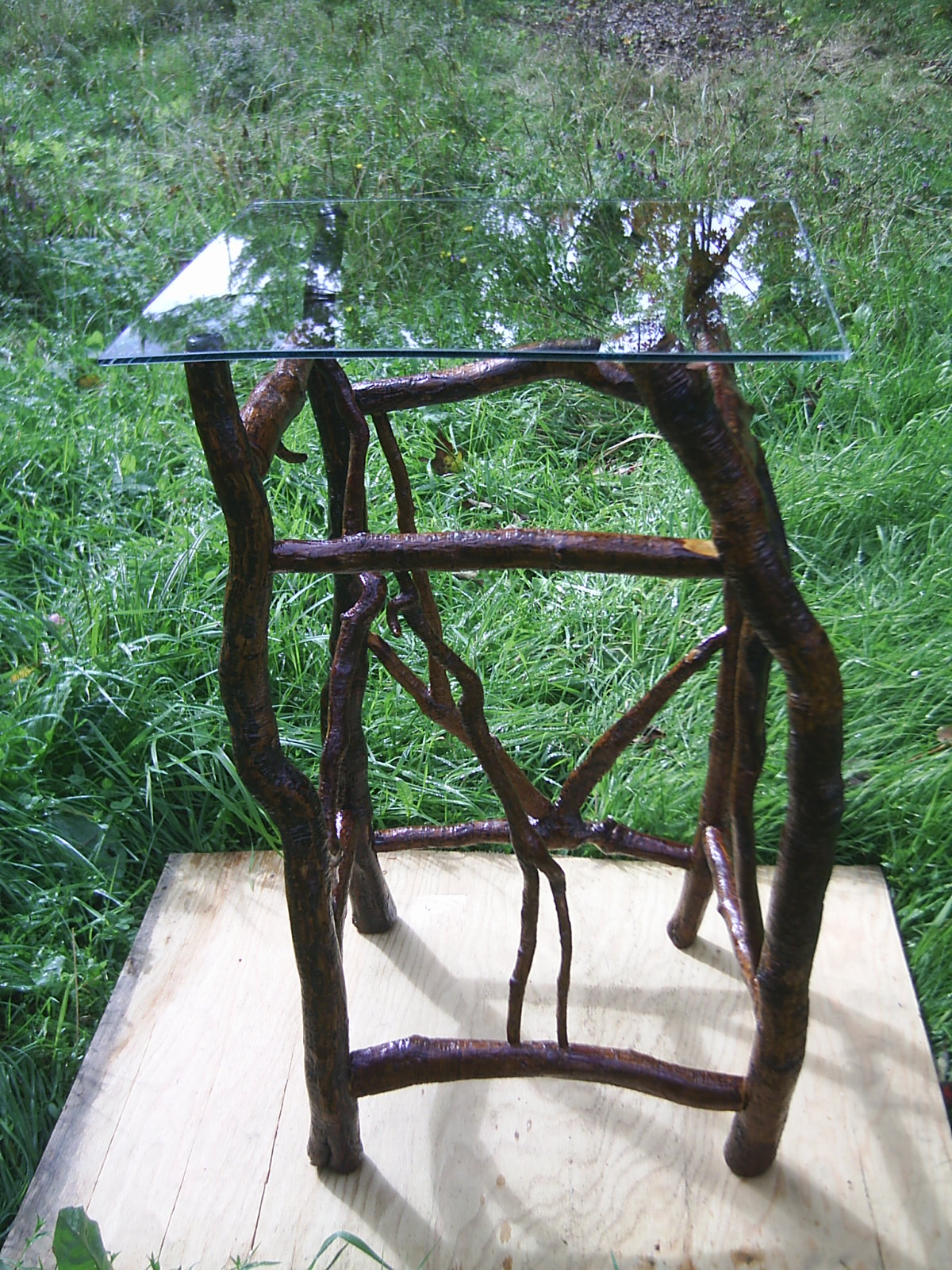
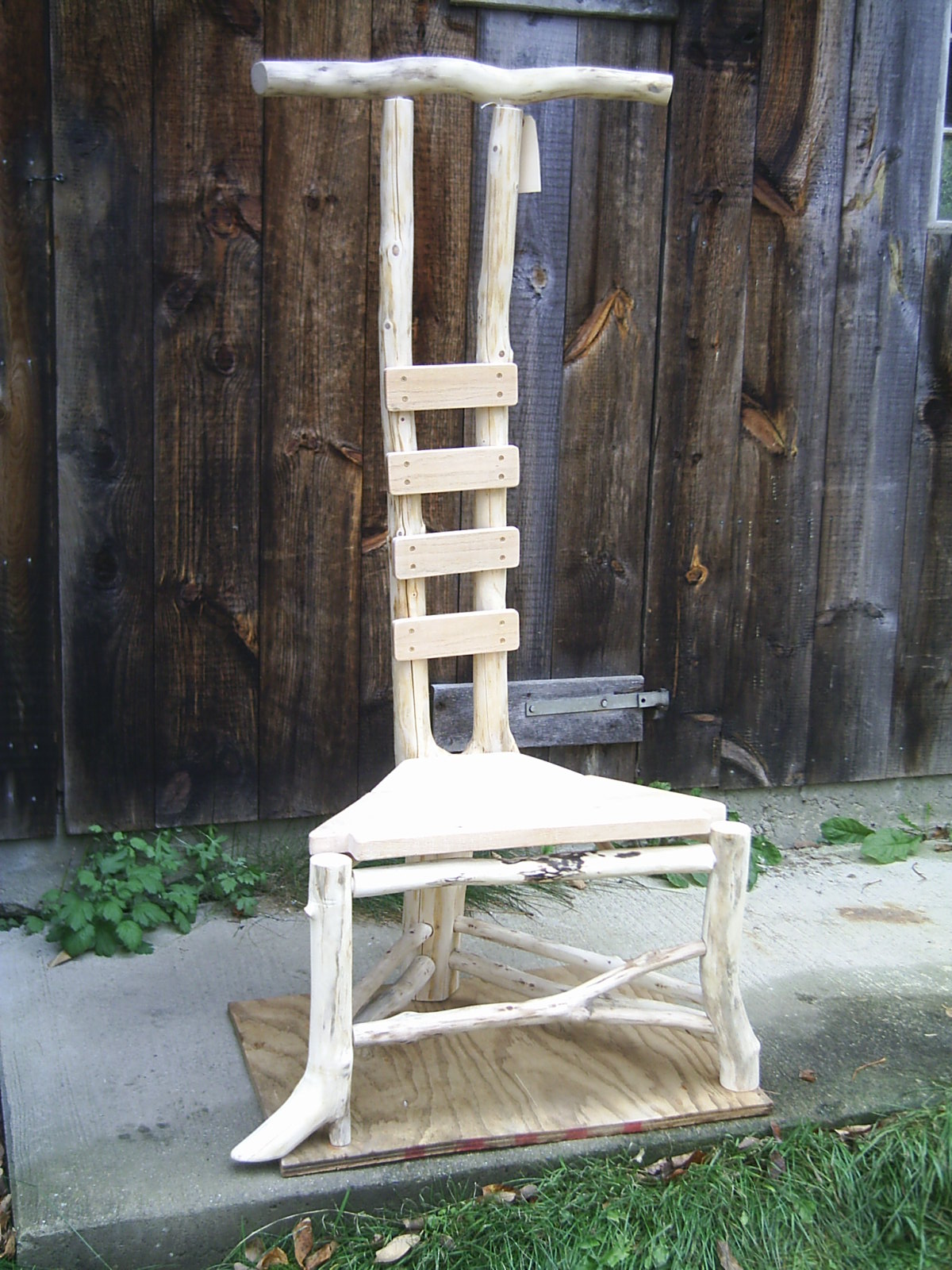
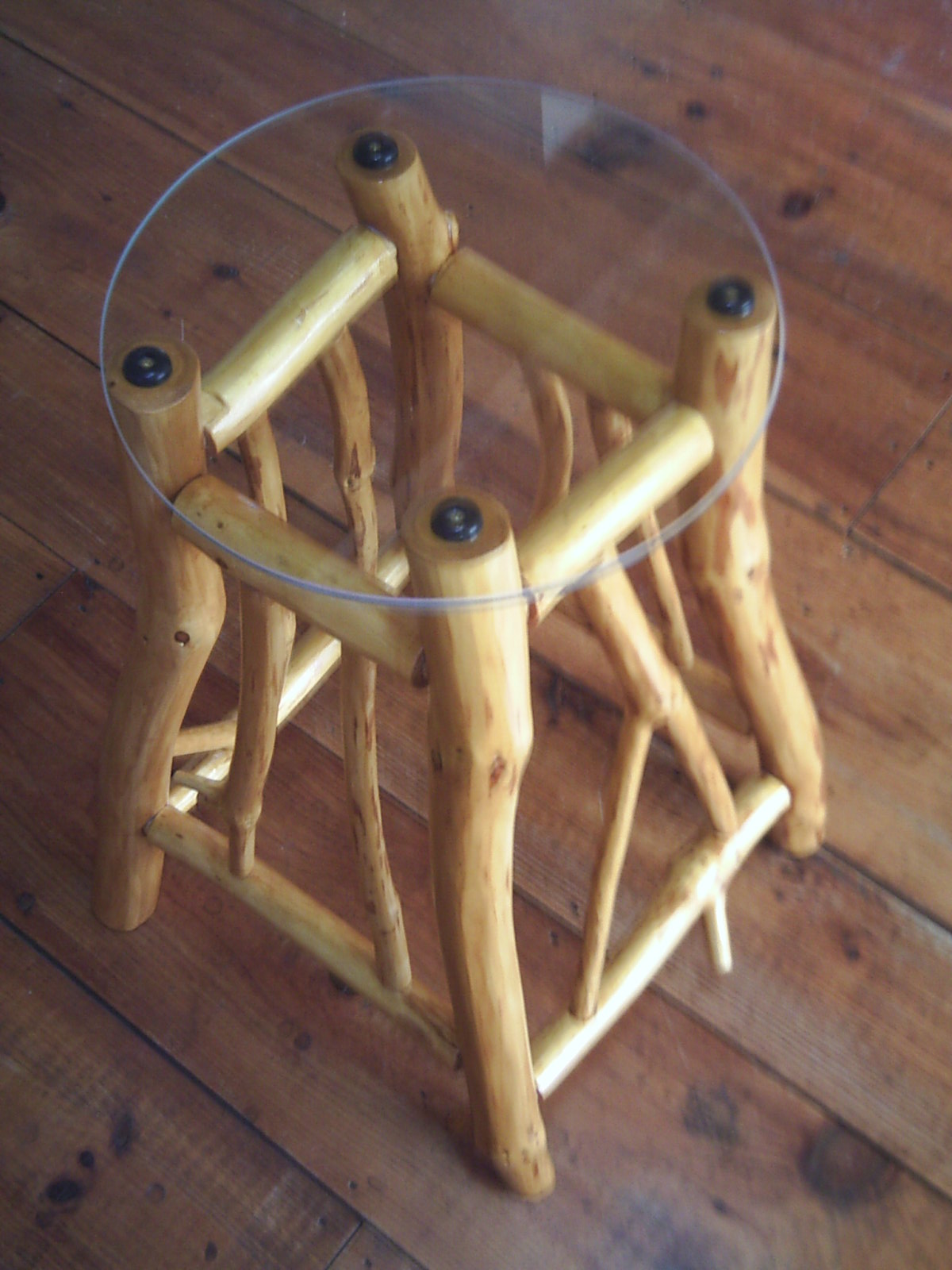
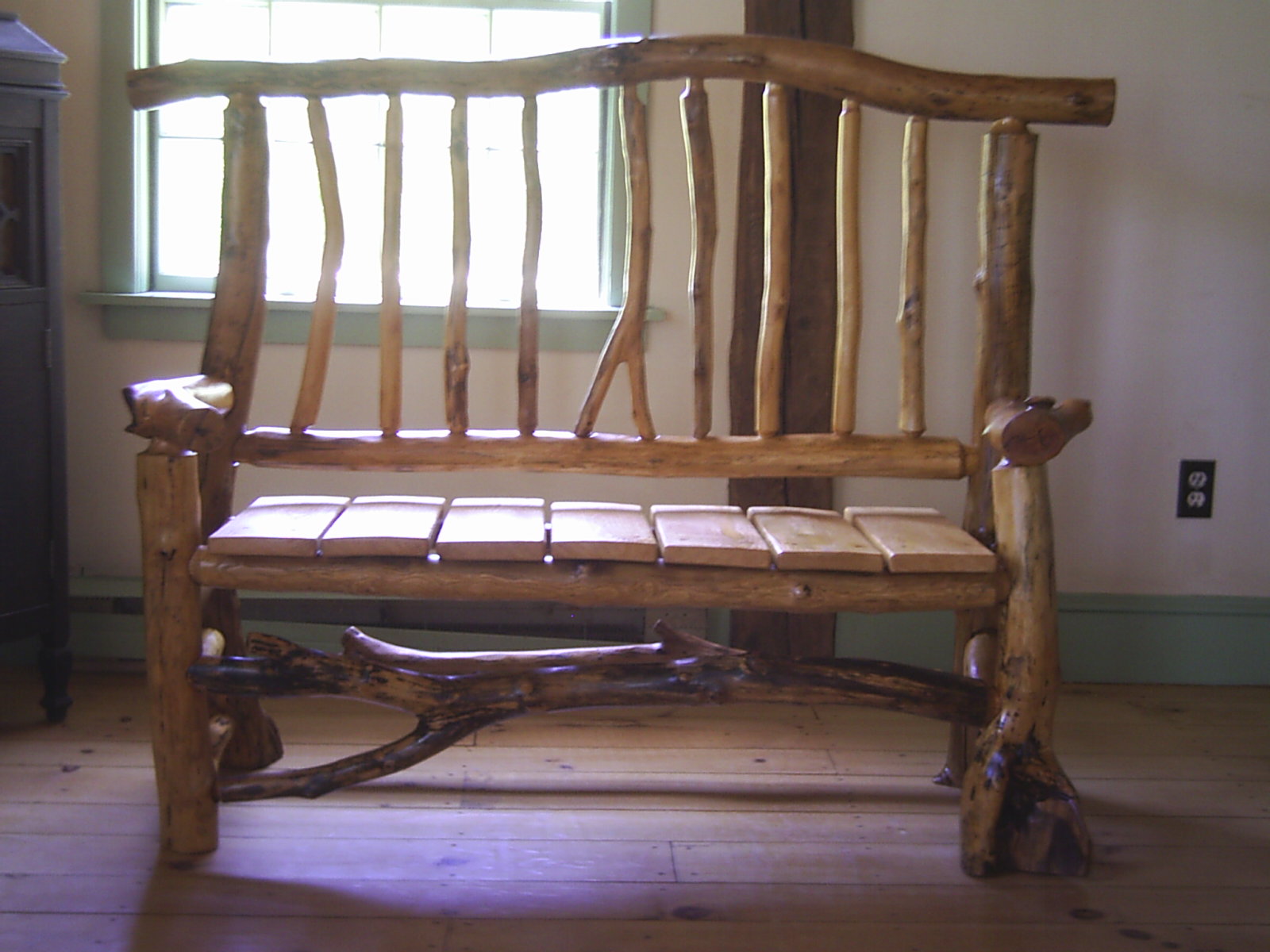
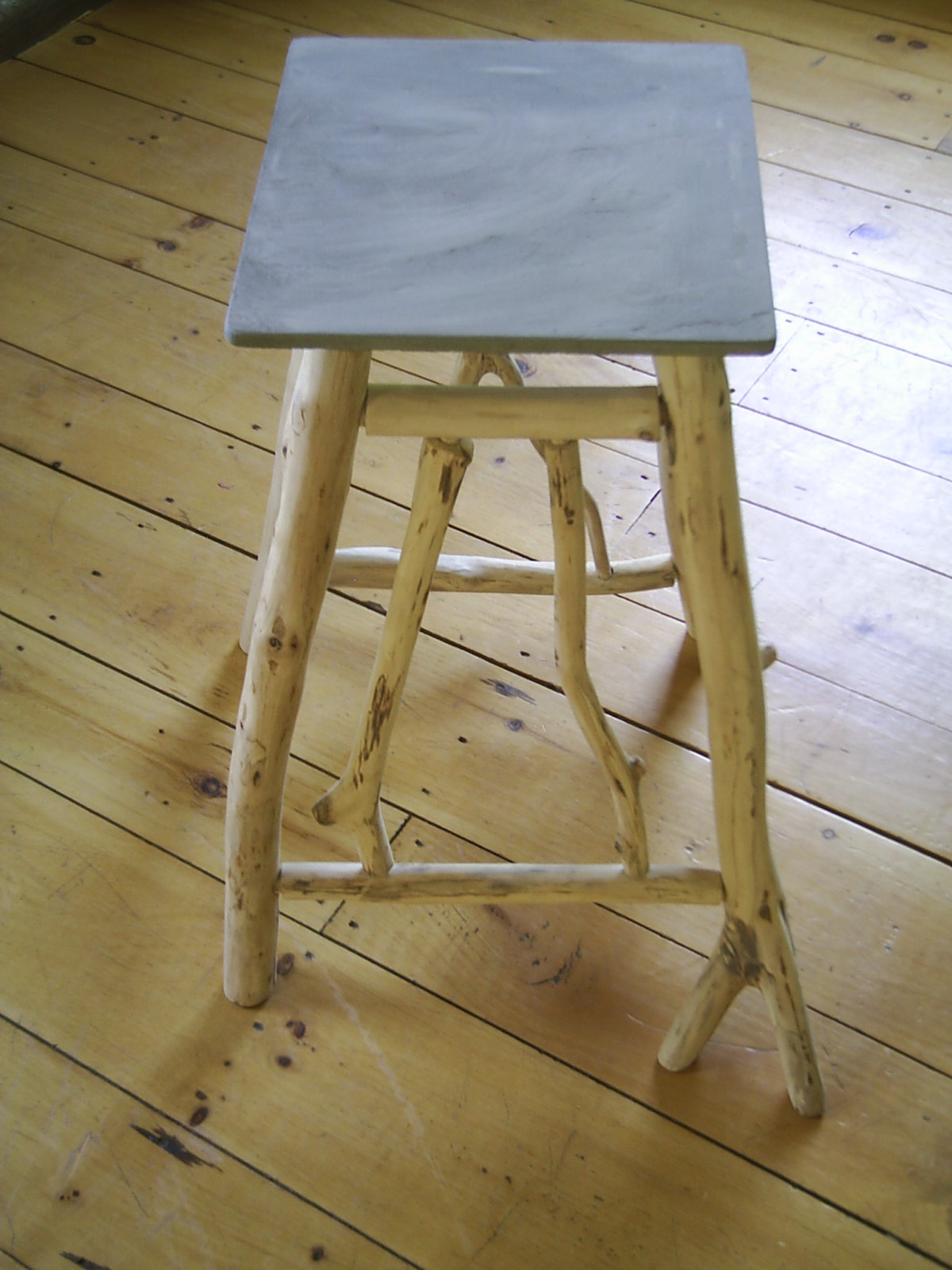
Availability
I'm currently not making furniture for sale. However, please check back because in the future I may decide to take orders online.
Some Instructional Material I've Checked Out
Rustic Carpentry: Woodworking With Natural Timber, Paul N. Hasluck, Ralph Kylloe, (Skyhorse Publishing, 2007)
How To Build And Furnish A Log Cabin: The Easy-Natural Way Using Only Hand Tools and the Woods Around You, W. Ben Hunt, (MacMillan Publishing Co., 1974)
Rustic Furniture Makers, Ralph Kylloe, (Gibbs Smith Publishing, 1995)
Rustic Garden Furniture & Accessories, Daniel Mack, Thomas Stender, (Lark Books, 2004)
Rustic Furniture Workshop, Daniel Mack, (Lark Books, 2000)
The Art of Rustic Furniture: Traditions, Techniques, Inspirations, Daniel Mack, (Lark Books, 1996)
Making Rustic Furniture: The Tradition, Spirit, and Technique with Dozens of Project Ideas, Daniel Mack, (Lark Books, 1992)
Master Log Furniture E-Course, by Charles R Raines, www.rusticmade.com
Rustic Garden Projects: 28 Decorative Accents You Can Build, Dawn King, (Creative Publishing International, 2006)
Marking Rustic Twig Furniture, Bim Willow, (Schiffer Books, 2009)
Build Your Own Log Furniture: Ten Great Projects You Can Build For Fun or Profit, Les Smith, Amazon's Les, Dan Swesey, (Cowboy-up Log Furniture, 2001)
Driftwood Furniture: Practical Projects for Your Home and Garden, Derek Douglas, (Firefly Books, 2003)
Getting Started in Woodworking: Skill-Building Projects that Teach the Basics, Aime Ontario Fraser, (Taunton Press, 2003)
The Basics of Craftsmanship: Key Advice on Every Aspect of Woodworking, Fine Woodworking, (Taunton Press, 2000)
The Complete Manual of Woodworking, Albert Jackson, David Day, Simon Jennings, (Alfred A. Knopft, 1989)
The Complete Illustrated Guide to Furniture & Cabinet Construction, Andy Rae, (Taunton Press, 2001)
Seat Weaving: A Manual For Beginners, L. Day Perry, (Charles Scribner's Sons, 1940)
Chair Caning and Seat Weaving, Cathy Baker, (Storey Publishing, 1977)
Simply Upholstery: Step by Step Renewing Your Favorite Furniture, (Sunset Books, 1998)
Upholstery Basics, Singer Sewing Reference Library, (Creative Publishing International, 1997)
Perfect Wood Finishing Made Easy: Sue Noble, (Popular Woodworking Books, 1998)
Understanding Wood Finishing: How to Select and Apply the Right Finish, Bob Flexner, (Fox Chapel Publishing, 2005)
The Wood Finisher's Handbook, Sam Allen, (Sterling, 2007)
Other Rustics
Rustic Sites
- www.woodlandcreekfurniture.com
- www.logfurnitureplace.com
- www.southwesternrusticfurniture.com
- www.greatrusticfurniture.com

